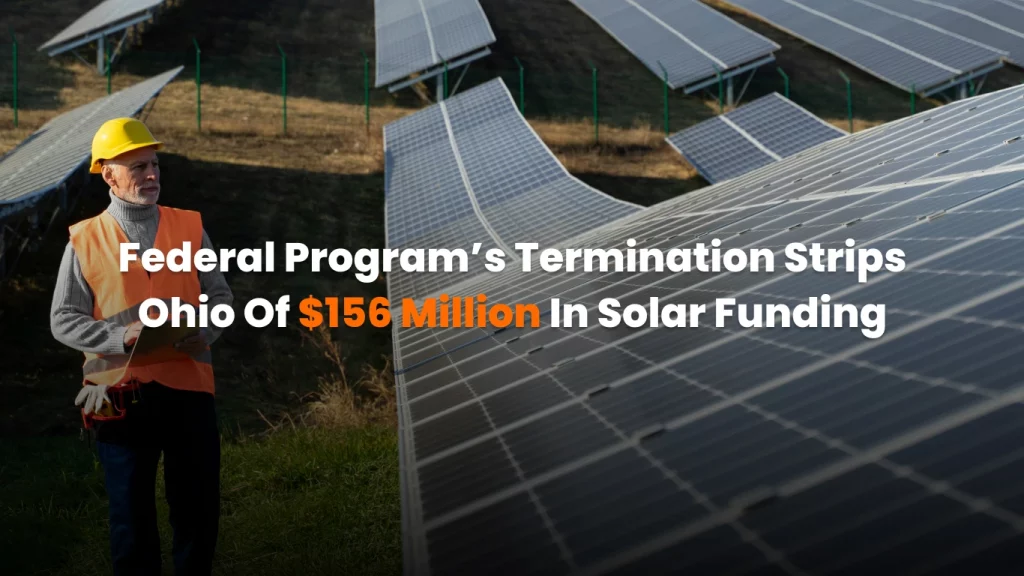Ohio’s renewable energy ambitions have been dealt a major setback following the U.S. Environmental Protection Agency’s decision to terminate the Solar for All program, a $7 billion federal initiative aimed at expanding solar access for low-income households nationwide. This decision also impacts future solar funding opportunities for the state.
Understanding Solar Funding in Ohio
The program, established under the Biden administration, was designed to provide solar power to more than 900,000 households across the country. Ohio had been awarded $156 million, funding that state officials and local partners intended to use for large-scale solar projects benefiting thousands of homes. This funding was crucial for enhancing solar funding initiatives in the region.
According to program plans, $90 million of Ohio’s allocation would have funded solar installations for more than 12,000 homes in Cleveland, Akron, Dayton, Columbus, and Cincinnati. The remainder would have been distributed to other communities across the state through partnerships with local governments and non-profit organizations, further supporting solar funding efforts statewide.
EPA Administrator Lee Zeldin announced the cancellation earlier this month, stating the agency “no longer has the authority to administrate the program” following recent legislative changes. He described the initiative as a “boondoggle” and argued that ending it would save taxpayers $7 billion.
The decision has sparked widespread criticism from clean energy advocates, local leaders, and environmental groups across Ohio. Legal challenges are already in preparation, with opponents arguing that the loss of federal funding will hinder the state’s transition to renewable energy and increase long-term energy costs for residents.
Ohio faces growing energy demands, particularly from the rapid development of data centers and other high-consumption facilities. “We’re not going to be able to drill and frack our way out of this,” said Lisa Garvin, a leading renewable energy advocate in the state. “We have data centers and big energy-sucking facilities being built in Ohio. We can’t drill and frack our way to power these. We need renewable energy.”
The program’s termination comes at a critical moment, as many planned projects were already in early development. Supporters note that beyond environmental benefits, the projects promised economic advantages, including lower household utility bills and new job opportunities in the clean energy sector.
Chris Quinn, a Cleveland-based commentator, voiced frustration with the political discourse surrounding renewable energy. “It’s amazing to me that FOX News and the Republicans have convinced a portion of America that solar energy is bad for the environment and bad for the future,” Quinn said. “This passive collection of energy from that big ball of fire that warms the planet every day, it’s the smartest way of generating energy in the history of our species.”
Energy policy experts warn that the funding loss is not just a temporary setback but a potential long-term obstacle to Ohio’s energy independence and sustainability goals. While fossil fuels like natural gas have historically dominated the state’s energy mix, many experts agree that a diversified approach, including renewable energy, is essential for meeting future demand and ensuring economic growth.
Whether any of Ohio’s lost funding can be restored now depends on the outcome of ongoing and planned legal challenges to the EPA’s decision.




